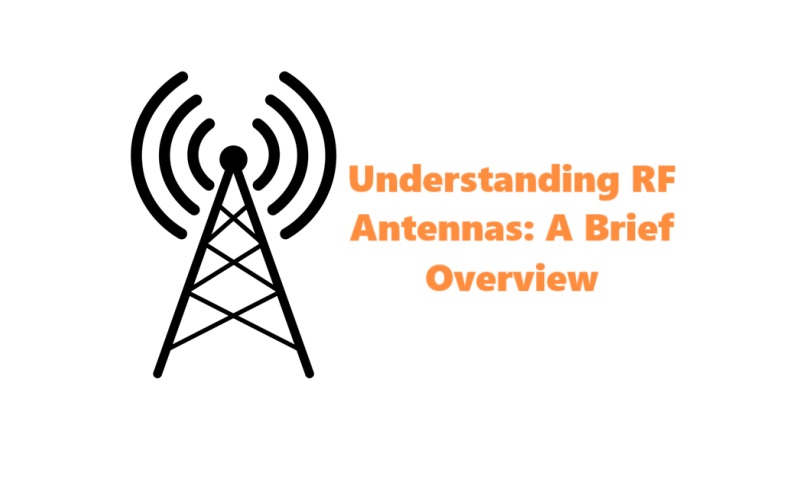Introduction
RF antennas play a crucial role in wireless communication systems, enabling the transmission and reception of radio frequency signals. Whether you’re using a smartphone, accessing Wi-Fi, or listening to the radio, RF antennas are at work behind the scenes. In this blog post, we will provide a brief overview of RF antennas, including their types, basic principles, applications, and the challenges and considerations associated with their use.
Types of RF Antennas:
There are various types of RF antennas, each designed for specific applications. Some common types include:
- Dipole Antennas: These antennas consist of two conductive elements, typically in the form of rods or wires, which are fed at the center. They are widely used in applications such as radio and television broadcasting.
- Yagi-Uda Antennas: Also known as beam antennas, Yagi-Uda antennas consist of multiple elements arranged in a specific pattern. They are commonly used for long-range communication and are often seen on rooftops for television reception.
- Parabolic Reflective Antennas: These antennas use a curved reflective surface, typically in the shape of a parabola, to focus incoming or outgoing signals. They are commonly used in satellite communication systems.
- Loop Antennas: Loop antennas are formed in a loop or coil shape and are often used in portable devices such as AM radios and RFID systems.
Basic Principles:
RF antennas operate based on fundamental principles of electromagnetism. When an RF signal is fed into an antenna, it generates an electromagnetic field that propagates through space. The antenna’s design and configuration determine its radiation pattern, which describes how the electromagnetic energy is distributed in space. Antennas are designed to efficiently radiate or receive signals within specific frequency ranges.
Applications:
RF antennas find applications in various fields, including:
- Wireless Communication: RF antennas are used in wireless communication systems, such as cellular networks, Wi-Fi, Bluetooth, and satellite communication.
- Broadcasting: Antennas are crucial for radio and television broadcasting, ensuring the transmission of signals to a wide audience.
- Radar Systems: Radar systems rely on antennas to transmit and receive radio waves for detecting and tracking objects.
- Wireless Sensing: Antennas are used in wireless sensor networks for applications such as environmental monitoring and industrial automation.
Challenges and Considerations:
While RF antennas offer numerous benefits, there are also challenges and considerations to be aware of:
- Signal Interference: RF signals can be affected by interference from other electronic devices, obstacles, and environmental factors, leading to degraded performance.
- Bandwidth Limitations: Antennas have specific bandwidth limitations, meaning they can only efficiently transmit or receive signals within a certain frequency range.
- Size and Form Factor: Antenna size and form factor can impact their performance and integration into different devices and systems.
- Matching Impedance: Antennas need to be impedance-matched with the transmission line or receiver to ensure efficient signal transfer.
What is an Unun: RF Antenna Unun
An Unun, short for Unbalanced to Unbalanced, is a type of transformer used in RF antenna systems to match impedance between an unbalanced antenna and an unbalanced transmission line. It is designed to convert the impedance of the antenna to a value that is better suited for the transmission lines. Which helps in improving the signal transfer. Impedance matching is important in RF systems to minimize signal reflections and maximize power transfer. When the impedance of the antenna and the transmission line are not properly matched. It can lead to signal loss, distortion, and reduced efficiency.
Read this: What is an Unun
Conclusion:
RF antennas are essential components in wireless communication systems, enabling the transmission and reception of radio frequency signals. Understanding the different types, basic principles, applications, and challenges associated with RF antennas is crucial for designing and implementing effective wireless communication solutions. By considering these factors, engineers and designers can optimize antenna performance and overcome the challenges associated with wireless communication.

